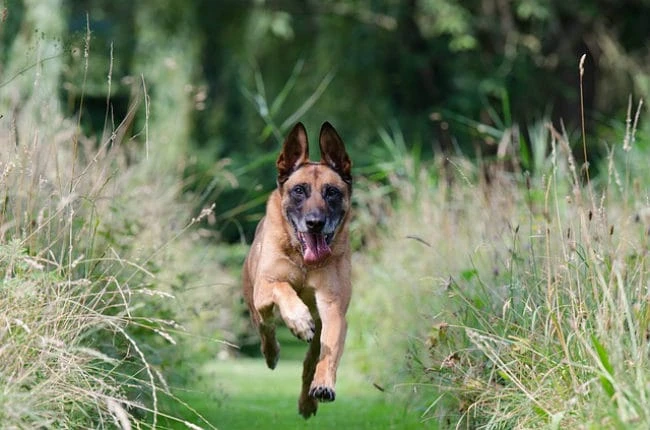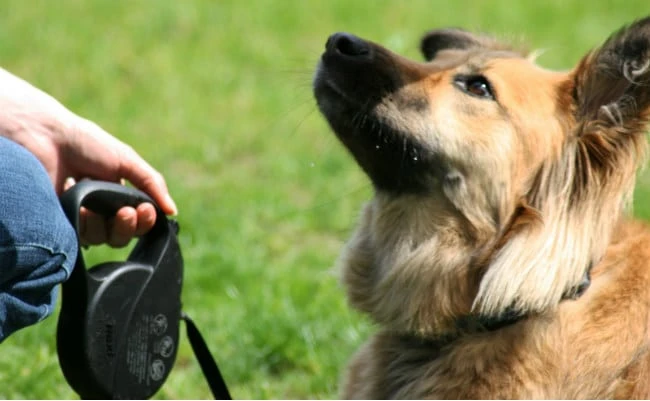Dog Obedience Training, How to Train a Puppy, How to Train a Dog

Why it is important to learn how to train a dog.
In this section you will discover the best dog obedience training tips so that you can learn how to train a dog or puppy fast and effectively.
Included throughout this section and here are some of the best dog training techniques, tips, tools, methods, devices and commands available online.
If you can make the training process fun a dog or puppy will learn faster and retain the information.
Their are many methods and dog training techniques currently being used by experts, however…
Not all dog trainers agree on the success of certain training techniques, consequently throughout this section of the website we will aim to cover all the techniques tools and dog training methods that are currently being used by dog obedience trainers and dog behavior experts throughout the World.
One thing that is agreed among all dog trainers and dog behavior experts is the fact that a dog or puppy needs and wants to be trained.
When dog obedience training a dog needs to have boundaries in place that they can follow and easily understand.
From the moment a puppy is born he is learning specific puppy behavior and adapting to his environment.
Initially it is the puppy’s mother who guides and trains him up to the age of 8 weeks and then it is your turn to take over and train him to adapt to your environment and this is when more advanced dog training techniques and commands become invaluable so that you get a well balanced, well trained and ultimately happier dog.
Dog Training for Obedience – why it makes sense.
I am a dog lover and dog owner and I believe that dog training and puppy obedience training is a vital ingredient when developing a relationship with your dog or puppy.
It really is common sense – if you spend time with your dog, training him and observing his behavior and rewarding him when he does something positive it is only natural that your bond will strengthen and develop.
Your ultimate aim is to develop a strong and healthy relationship with your dog.
A relationship that can last and develop and ride through difficult moments during the training regime. 
There are many different dog obedience training techniques including…
- Dog whispering
- Dog clicker training
- Positive reinforcement
- Negative reinforcement
- Marker training
- Reward training
- Ethology-based techniques
- Dog training Schools
- Dog training classes and puppy obedience training classes
But it really doesn’t matter which training techniques that you decide to use as you are ultimately after the same thing, and that is to get a well trained and obedient dog whose behavior you can anticipate and trust
Dog Obedience Training-Why should I bother?
1. Training your dog sets down the boundaries that he needs to adhere to so that he can become a responsible companion. Dog obedience training and puppy obedience training gives a dog leadership and guidance.
A dog is a naturally a pack animal and their natural instinct is to follow the pack leader or alpha male.
2. When learning how to train a dog or when learning how to train a puppy it is important that you start training your dog from a very early age.
A domesticated dog is quite happy to have a human pack leader or ‘alpha dog’ but you need to remain strong, consistent and fair -just like his mother would be in the wild.
3. It is down to you as the pack leader to curb any natural aggression and socialize your dog from an early age.
4. Many dog behavioral problems that include (barking, digging and biting) are normally a result of bad communication between you and your dog.
You may have been inconsistent, impatient or moved through the dog training or puppy obedience training process too fast.
5. Setting the boundaries and guidance early in a dog’s life helps to prevent any unacceptable problem behavior from creeping in.
The Benefits of Dog Obedience Training
- Dog training and puppy obedience training helps to give your a dog a ‘place’ in the world and eliminates any confusion.By eliminating all of the ‘obstacles’ it helps to give your a dog a clearer view – more of a black and white view of what is acceptable behavior and what isn’t.
- Obedience training your dog will make both of your lives happier and more fulfilled. You will be able to take your dog anywhere and be safe in the knowledge that he will behave.
- Training your dog or puppy will give you a clear definition in your relationship and you will have a mutual respect for each other – and your dog or puppy will learn that you are the alpha male and leader within his pack.
- It is great to think that your dog is going to be trustworthy around strangers and any kids.
- Dog and puppy obedience training can be built upon and added to as it is a step by step process..
- Training a dog or puppy is a great way to have ‘fun time’ with your dog but also gives him stimulation and helps to keep his brain and body active.
- Dog training and puppy obedience training and remaining the one in charge or ‘pack leader’ helps to eliminate any dominance issues that can cause dog behavior problems.
- A trained dog or puppy is much safer.If your dog or puppy has a small relapse and runs off while being walked you can recall one of the training techniques or training commands that you have learnt – having these tools at your disposal are extremely beneficial, and this is empowering for you as a dog owner and dog trainer.
The danger of not obedience training your dog.
- If you don’t train your dog you can never really expect your dog to be a member of the family or to ever really get close to you.If you don’t trust your dog when you go out on family days out he will be left at home-this can cause behavior problems and will leave your dog isolated and badly socialized.
- Unfortunately it is a fact that most of the dogs or puppies that end up in animal shelters are there because they were not trained and had developed serious behavior problems.
- An untrained dog could become a danger to other people and other dogs.
- Untrained dogs will often challenge your authority as they have ‘no place’ in your pack.An obedience trained dog may try testing your authority but you will have the techniques and tools to deal with any problems that arise.
The Golden rules for effective Dog Obedience Training.
Below we have listed some free dog training tips that you should follow when dog training and puppy obedience training.
This is a brief introduction describing some of the dog training techniques and methods currently being used by experienced dog trainers:
- You should not expect your dog to instantly know what he is doing. You will need to constantly repeat the commands until your dog or puppy is doing what you ask straight away.
- You should reward and praise your dog whenever he does something that you have asked.You should do this straight after the incident and not five minutes later.
- You and your family should always be consistent. If you have chosen a specific command when you want him to go outside-use the same command every-time.Be straight forward with your dog – as they like things to be black and white-this will make things clearer and make obedience training easier for both of you.
- Be realistic in your expectations, if your dog does something that you have yet to train him is wrong don’t punish him as you have not trained him that it is wrong or unacceptable yet.
- Dog obedience training sessions should be short and fun. Unfortunately many dog training schools make the mistake of their lessons being too long.
- After you have trained your dog with a specific command you should test your dog in different environments, different situations with different distractions.
- Only correct you dog if you catch him in the act.
- You should be setting aside time everyday for obedience training.If you make it part of his daily routine it will train your dog faster. Try asking him to ‘sit’ before you feed him or to ‘sit’ before you take him for a walk your dog needs to understand that sit means sit.
Don’t train him with a command and then leave it five days before you use it again. Start by using simple and basic dog training commands such as the ‘sit’ command before you move onto the next training technique.




